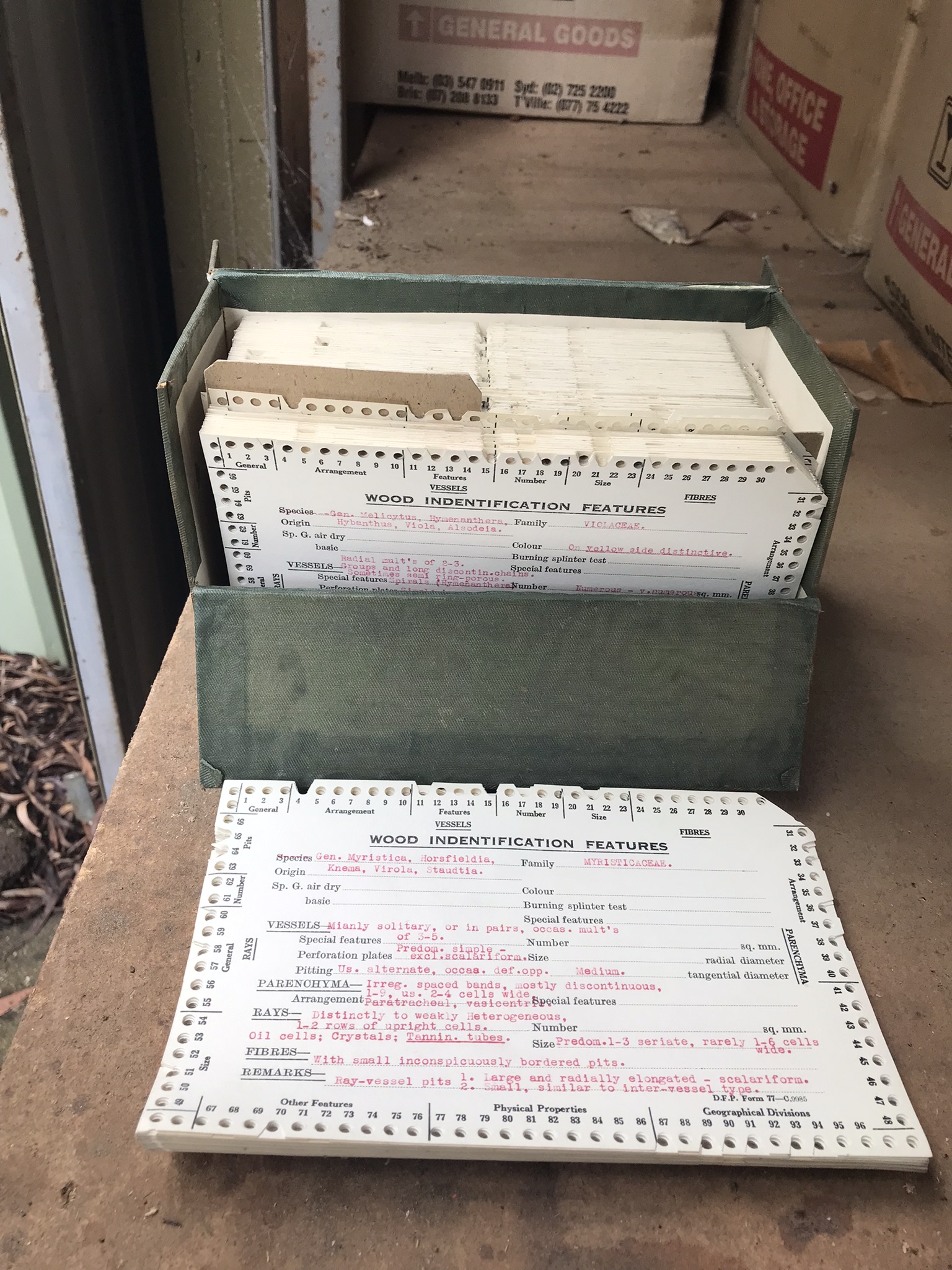Edge-notched index cards were invented in about 1896 and have holes punched around the borders. The top right-hand corner is also clipped to help stacking the deck. The holes could be clipped to search and sort information.
For foresters, these cards were commonly used to identify timber samples.
Using a 10X magnifying lens, or a microscope, the key structural features of the timber sample were first identified. For example, softwood or hardwood.
A long knitting needle was inserted into the hole for the feature and the cards shaken. Those cards which matched fell onto the table. The fallen cards were then restacked and the next identifying feature selected with the needle. The whole process repeated until there was only one, or maybe a few, cards left.
Each sample card had a more detailed description of the timber.
It was a very simple and effective binary (yes/no) decision process to search through hundreds of timber types.
Needless to say, computers replaced the old wood technology cards.
https://en.wikipedia.org/wiki/Edge-notched_card


